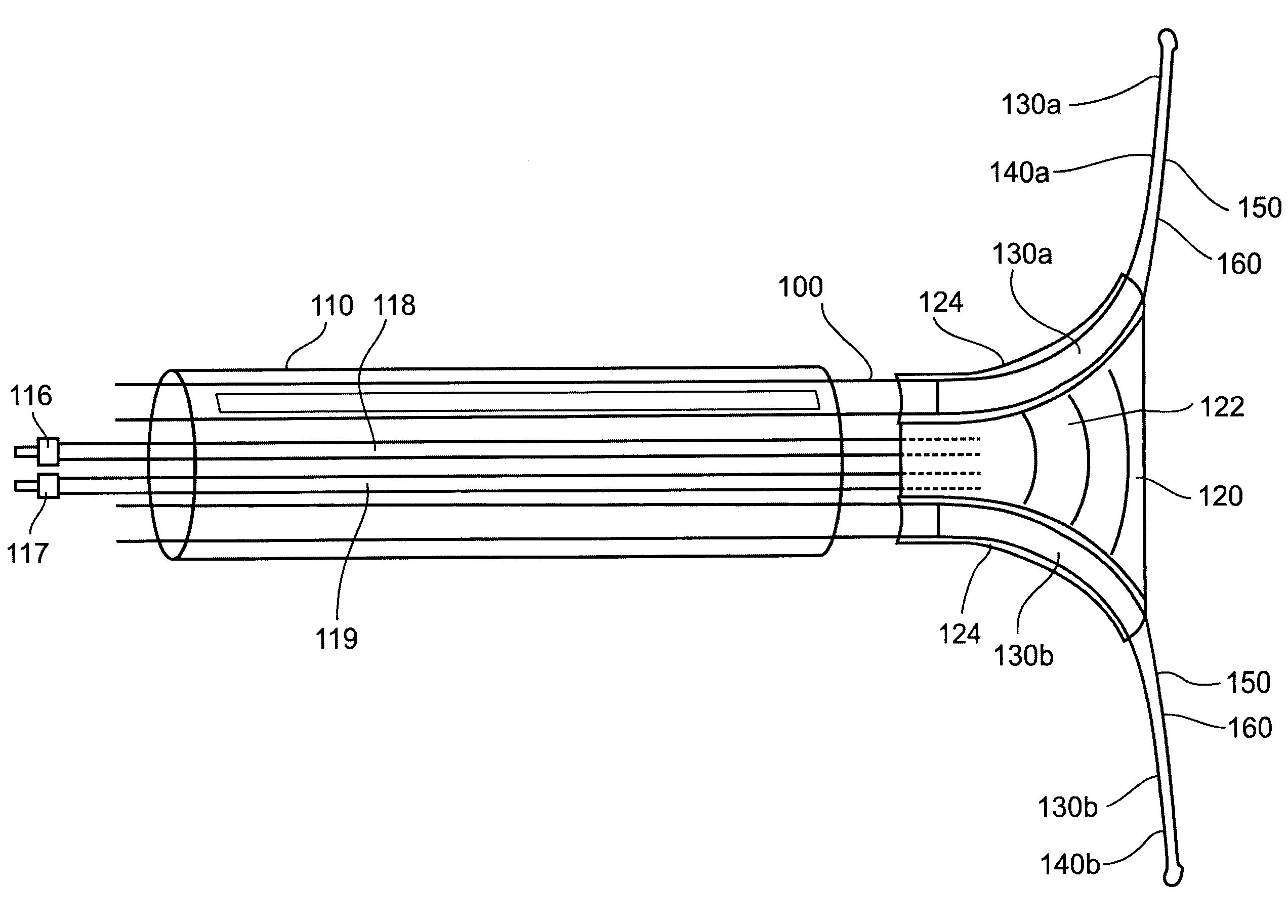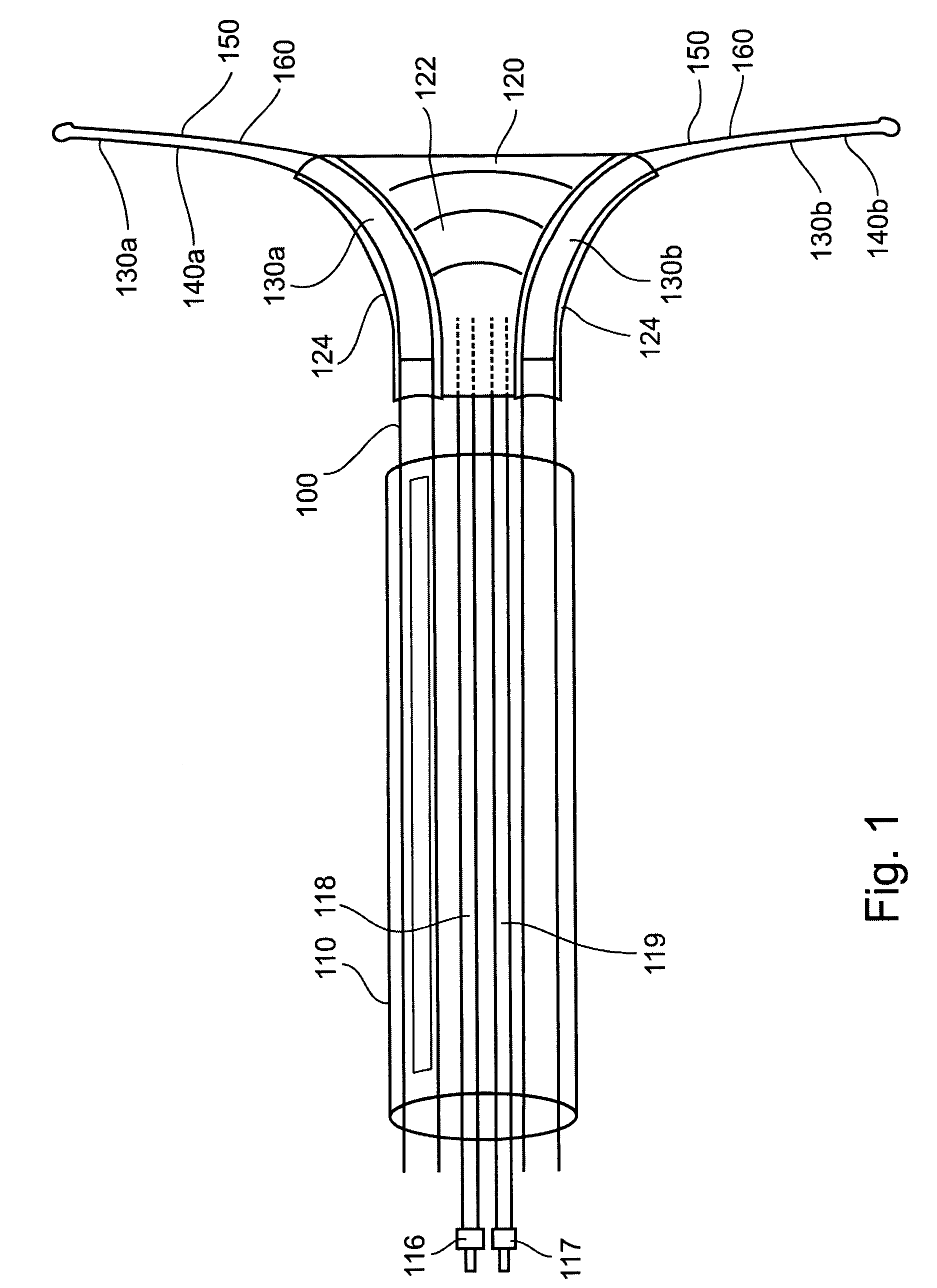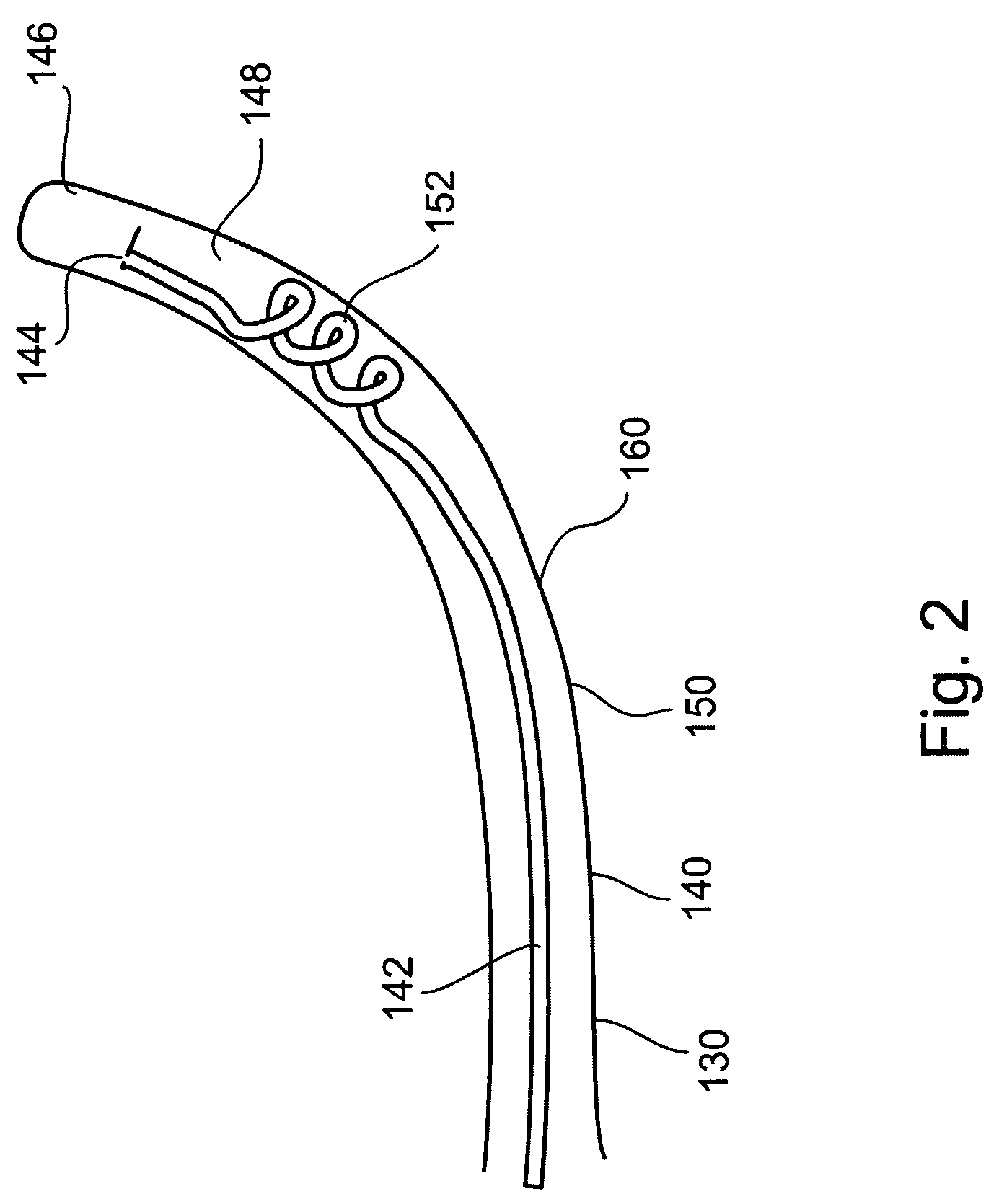Endometrial ablation device and method
a technology of endometrium and ablation device, which is applied in the field of endometrial ablation device and method, can solve the problems of rarely lasting solution inability to perform surgery, and inability to achieve long-lasting effects, etc., and achieves the effect of not being recommended for the treatment of dysfunctional uterine bleeding
- Summary
- Abstract
- Description
- Claims
- Application Information
AI Technical Summary
Benefits of technology
Problems solved by technology
Method used
Image
Examples
Embodiment Construction
[0050]The present invention is of devices and methods for thermal ablation of the endometrium as treatment for dysfunctional uterine bleeding and related conditions. Specifically, devices and methods here disclosed enable application of ablation energies to the entire surface of the endometrium in a controlled and uniform manner.
[0051]A preferred embodiment of the present invention comprises a transparent inflatable coolable balloon operable to cool the endometrium, cryoprobes operable to be advanced into the uterus cornuae for cooling endometrial tissues therein, an applicator operable to deliver balloon and cryoprobes to and from the uterine cavity, and optional channels within balloon and applicator for a hysteroscope and a light source, enabling observation of all aspects of the ablation process.
[0052]Before explaining at least one embodiment of the invention in detail, it is to be understood that the invention is not limited in its application to the details of construction and...
PUM
 Login to View More
Login to View More Abstract
Description
Claims
Application Information
 Login to View More
Login to View More - R&D
- Intellectual Property
- Life Sciences
- Materials
- Tech Scout
- Unparalleled Data Quality
- Higher Quality Content
- 60% Fewer Hallucinations
Browse by: Latest US Patents, China's latest patents, Technical Efficacy Thesaurus, Application Domain, Technology Topic, Popular Technical Reports.
© 2025 PatSnap. All rights reserved.Legal|Privacy policy|Modern Slavery Act Transparency Statement|Sitemap|About US| Contact US: help@patsnap.com



